My Yard Got Meme’d and Went Viral. Folks Doubted The Garden Was Real.
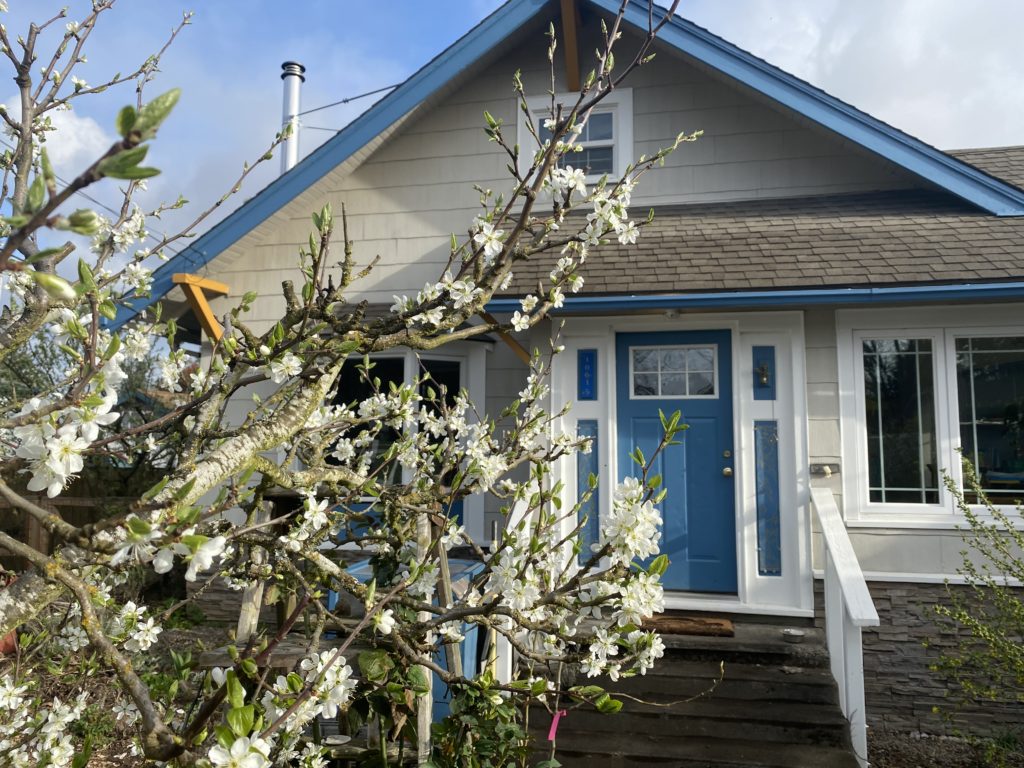
When Strangers Think They Know Your Garden Best
A few days ago, a meme of my front yard garden went viral on social media. I didn’t make the meme, and it’s been incorrectedly credited several times as the garden of a man in the UK, but it is, in fact, Parkrose Permaculture.
Inevitably, when someone shares a single image like this and it spreads rapidly on social media, criticisms, “gotchas”, fault-finding, and definititive judgments flood the comments section. Everyone becomes an authority and makes confident assertions and declares “this is how it really is” based on one image.
I responsed to the most common declarations in my video today (see below), but I wanted to take some space in this blog to address in detail one particular “hot take” that I didn’t address thoroughly on YouTube (perks of reading the blog!). It’s a question folks have asked long before this meme was made, and today I’m going to answer it, so let’s dive in.
Your Garden Isn’t Real, Angela.

The skeptics came out of the woodwork on each and every share, calling the images “faked.” They were confident that this garden must be photoshopped. It couldn’t be real. No one could really transform their front yard like that, right? Total strangers became “experts” on my garden based on a single meme showing a small portion of the yard. As the French say, “Trop beau pour être vrai,” and being manic with our skepticism sure is en vogue.

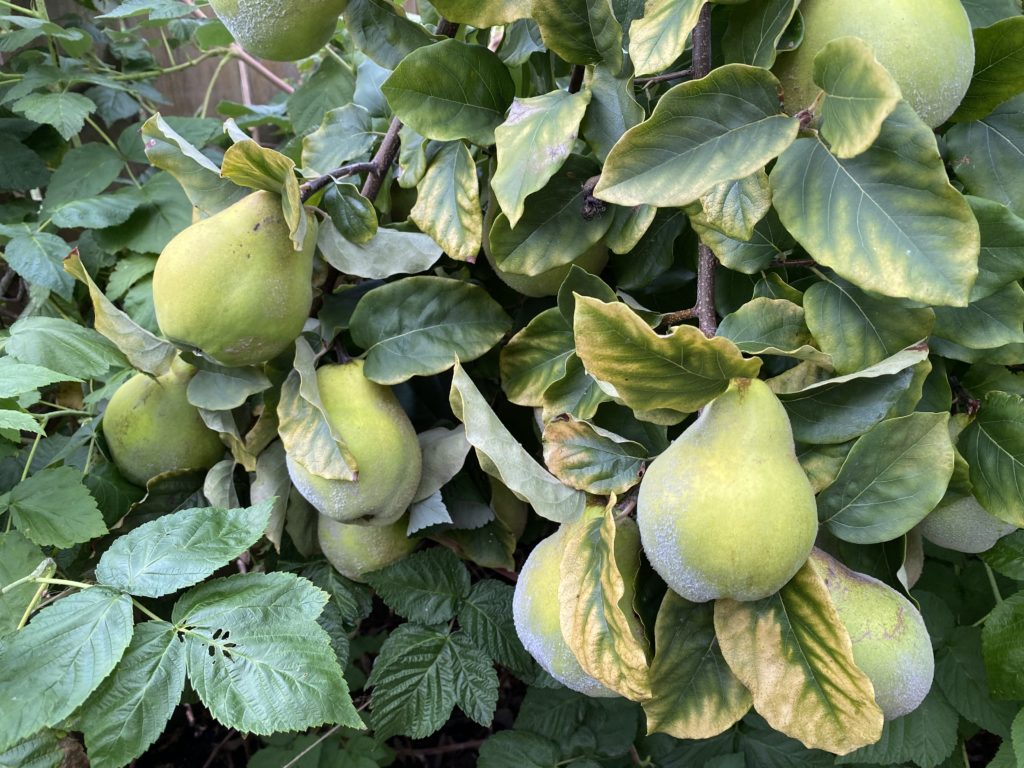
OK, OK. Maybe It IS Real, But She Definitely Doesn’t Have 32 Fruit and Nut Trees on 1/4 Acre.
While the confirmation bias of folks making these assertions on the internet was intensely strong, several lovely humans did return and say, “Gah, my bad! I should not have made assumptions,” after viewing more pictures of the garden or finding my YouTube. It takes integrity in our modern society to say, “Welp, I goofed that up. I’m sorry!”, so I appreciate it when folks admit they’re wrong and want to do better going forward.
To be fair, the transformation of the garden is profound. I look back at pictures of the house when we first moved in, and it doesn’t feel like my house at all. Although, even back in 2009, in my mind’s eye, I could see what the garden would look like in time. I had faith in the process, and have enjoyed every step of getting from there to here. It may seem too good to be true, so I understand the skepticism. But perhaps ask questions instead of assuming. Afterall, you know what they say about that…
Ok, but seriously…32? Impossible.
If folks believed that the images weren’t fake, they still called me “dishonest”. According to these guys, based on one image, they knew I was clearly “exaggerating” how many trees I can carefully fit on the property. It simply didn’t mesh with their mental image of how trees should be positioned in the landscape. It didn’t fit with the image of how horticulturists and modern farmers tell us we must grow fruit trees. Afterall, if you haven’t seen it done, it can be difficult to imagine another way. It’s easier to disbelieve than ask for evidence that might change your mind.
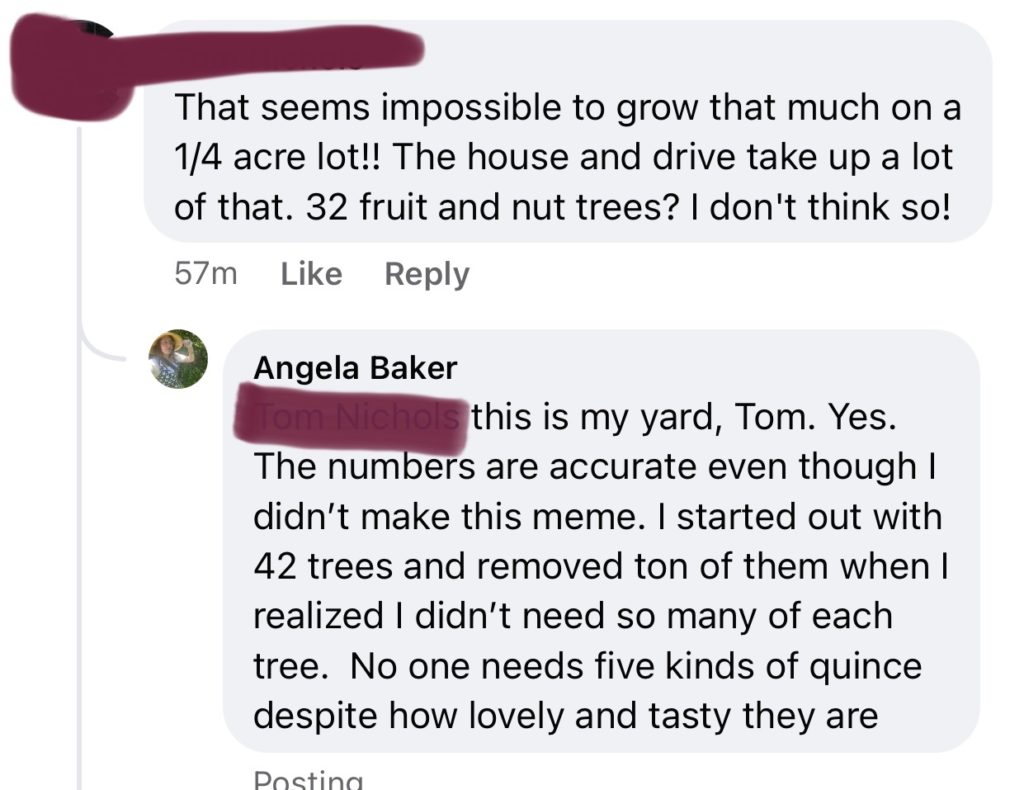
If You Really Grow 32 Fruit and Nut Trees, What Are They, Hm? Hmm?!
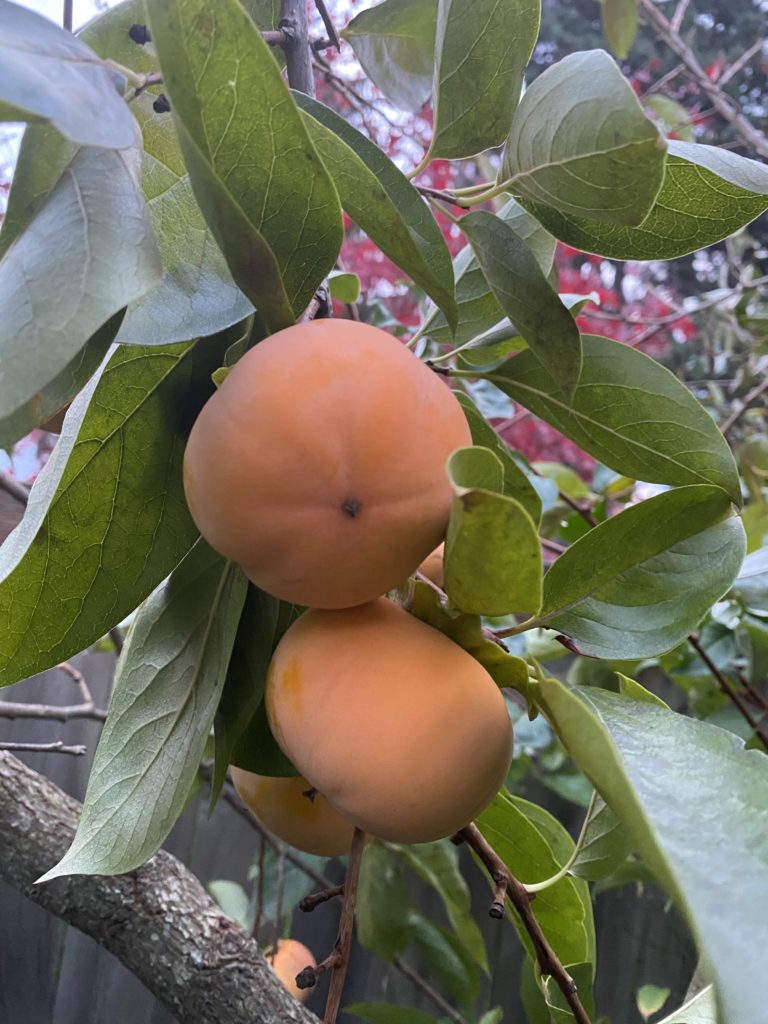
I have compassion for the level of skepticism happening in response to this meme, and I thought perhaps the most helpful thing to do here – both for doubters, and folks interested in adding trees to their own gardens – would be to list out for you all of the trees I grow here. I’m going to be totally honest right from the get-go: The youngest tree is 2. Most are over 10 years old, and a few are 15 (purchased as 1-2 yr old trees, or squirrel-planted before we moved in). It’s not actually 32 trees, but check for yourself:
- Plums, European (Prunus) x5 – Shropshire Damson, Stanley, Early Laxton, Bavay’s Greengage, Early Italian
- Pawpaws (Asimina triloba) x3 – Allegheny, Rappahanock, and Suquehanna
- Elderberry (Sambucus) x2 –Nova and York (I used to have a Blue elder, but removed it)
- Apple (Malus) x6 – Ashmead’s Kernel, Hudson’s Golden Gem, Roxbury Russet, Honeycrisp, Liberty, Cox’s Orange Pippin (again, I used to have more. It was too many apples)
- Medlar (Mespilus germanica) – Breda Giant
- Pear, Asian – triple grafted (In a pot)
- Pear, European – Seckel
- Fig (Ficus carica) x2 – Desert King and Negronne (the latter is superb)
- Sea Buckthorn (Hippophae rhamnoides) x3 – (this is technically a shrub, but grows very very large and I treat it like a tree) 2 females, and 1 male
- Hazelnut (Corylus) – my lone nut tree. I coppice it for firewood and plant stakes. Nuts.
- Persimmon (Diospyros) x2 – Early Fuyu and a hybrid persimmon, Nikita’s Gift
- Quince (Cydonia oblonga) x3 – Aromatnaya, Krimskaya, and an unnamed variety
- Mulberry (Malus rubra) x3 – Illinois Everybearing, Contorted, and Dwarf
- Purple Robe locust (Robinia) – this tree’s seeds are not edible. It is an important nurse tree in my food forest, produces edible blossoms, but will eventually be cycled out.
- Peach –Oregon Curl Free
- Jujube (Zizyphus jujuba) – Lee and Lang
- Lemons – Meyer and Variegated Meyer in pots (they live in the greenhouse in winter)
- Sweet Bay (Laurus nobilis)- also in a pot, and sheltered in the winter outdoors
Like I said, not 32. That list makes 40. I generally don’t count the trees in pots, but they are an important part of our system and do produce important yields for me and I should. I did not include bush cherries, large shrubs like goumi and aronia and tallbush cranberry. Perhaps smaller fruits are a topic for another post in the near future.
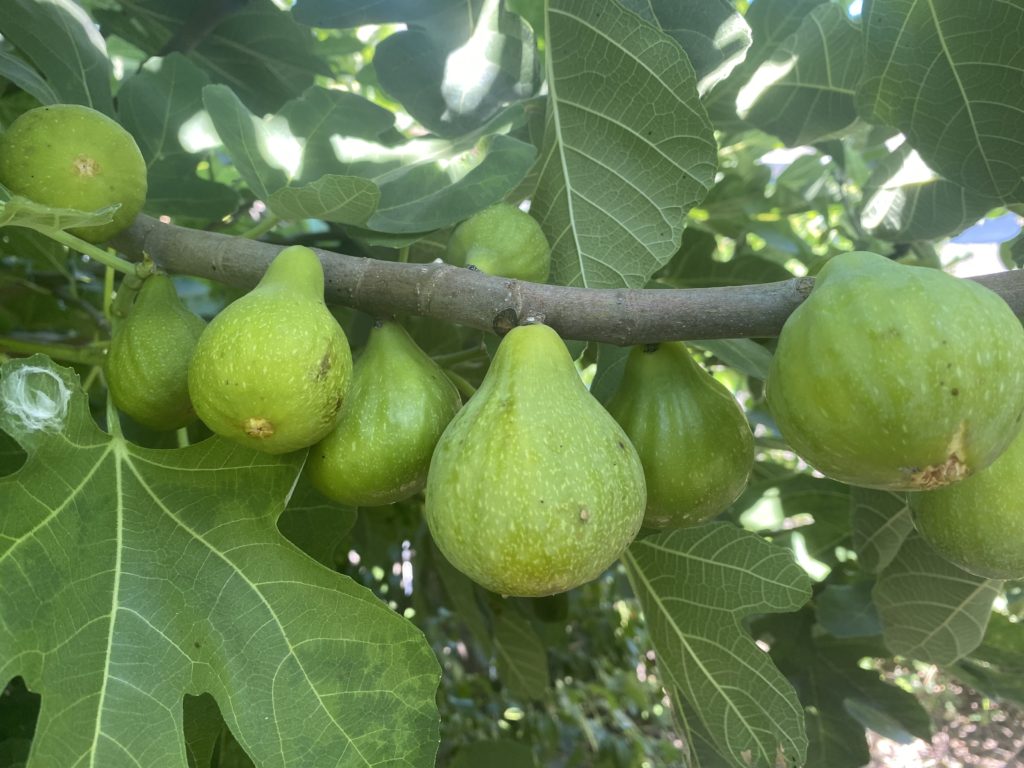
Needs pruning, or it gets huge.
I hope that information is helpful for folks. In the coming weeks, I’ll continue to lay out how I fit all these trees, why I need them all, and what my design process is. It is my sincere hope that I can help illuminate how permaculture – real world permaculture, not a thought exercise – functions. Hiccups and all. That’s my goal in blogging and making videos: to share the design process of permaculture, explain the principles, and how the work in the context of our real, hectic lives, and in our real gardens. For me and my family right now, 40 trees works in that context. It enriches our lives and feeds our bellies, and creates habitat for wildlife.
In an extractive world, regenerative ways of living can seem really foreign. Our knee-jerk reaction can understandably veer toward skepticism when someone tries something far outside the cultural norm. It’s my hope that permaculture – and other resilient design systems – can become accepted and normalized. Goodness knows we and the Planet need them.
If anything, I’m grateful that despite all the hater-ade I got from this meme blowing up (as much as permaculture memes can blow up?) on social media, it has helped more folks discover permaculture design, and helped more folks question the status quo when it comes to our gardens, our neighborhood design, and how we organize our society. I love sharing my garden, and am glad this experience has given me the opportunity to share it with more people, and explain in more detail how the system is designed and functions.
